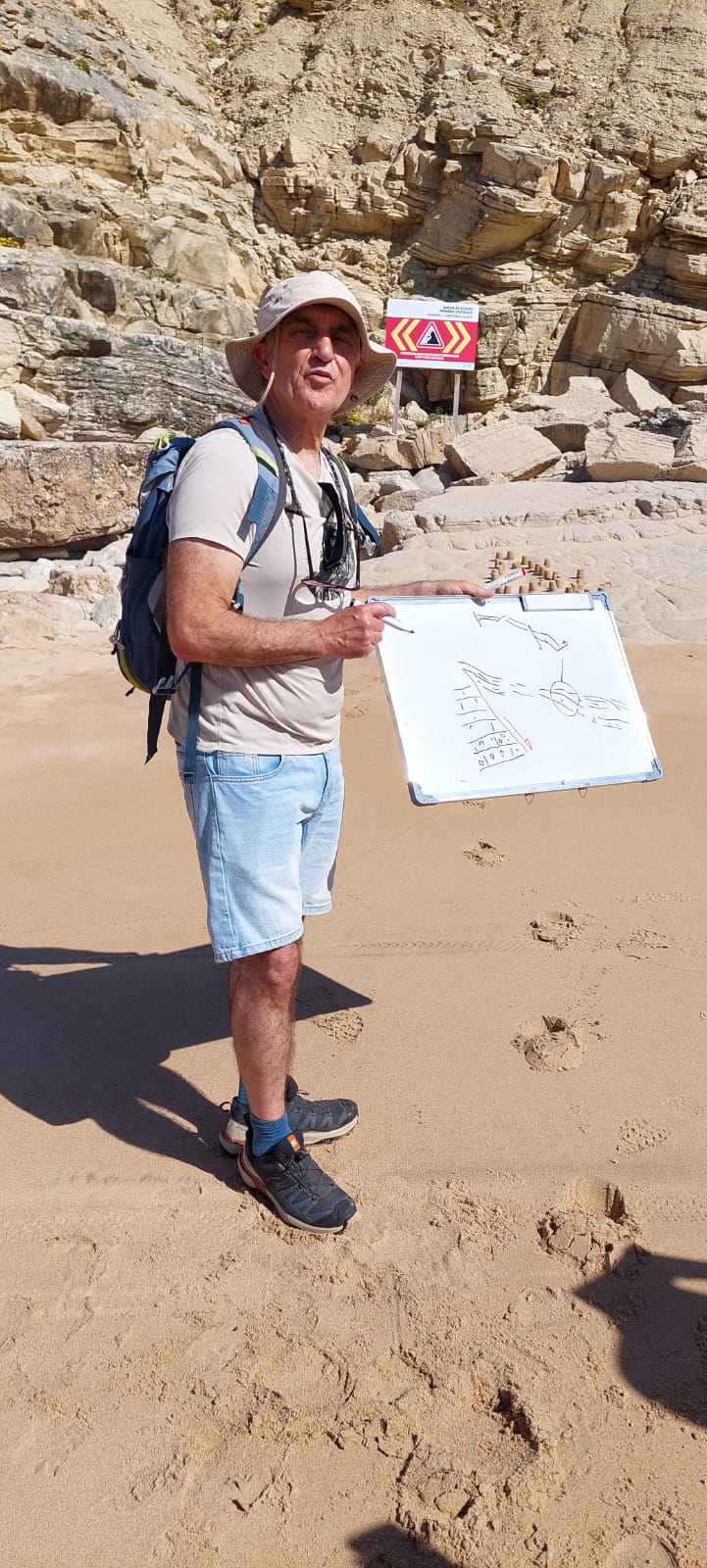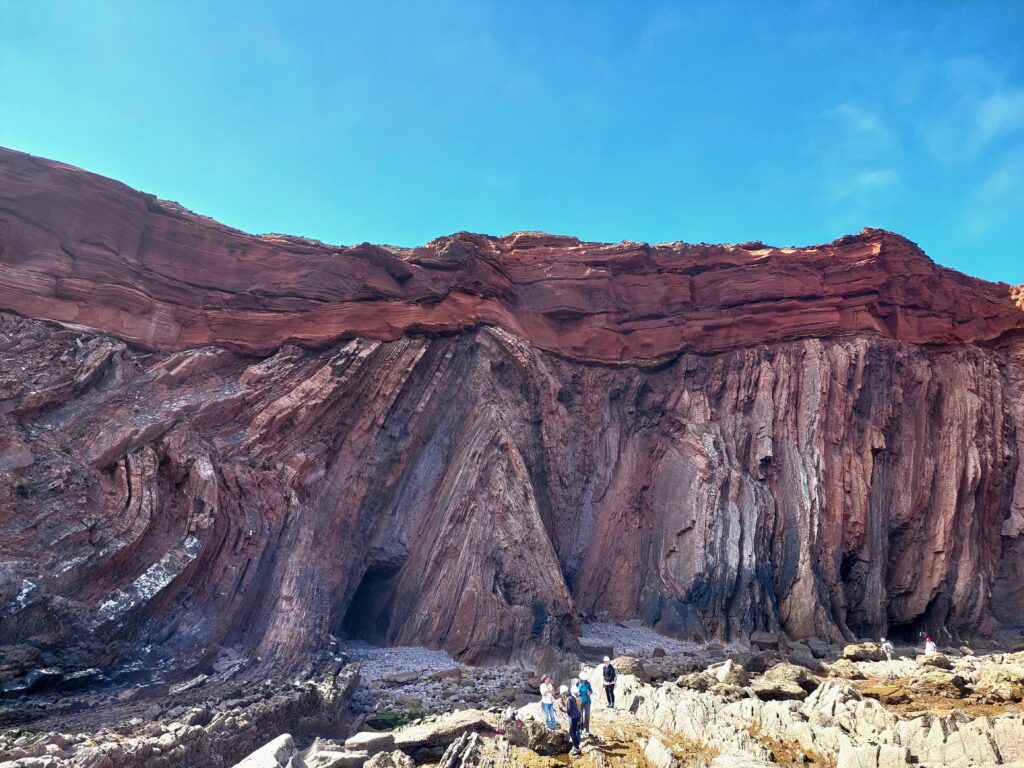Field Trip #2 – Telheiro Beach
 Pedro Terrinha, Portuguese Institute for the Sea and Atmosphere (IPMA)
Pedro Terrinha, Portuguese Institute for the Sea and Atmosphere (IPMA)
The Triassic unconformity at the Telheiro-North Beach in southwest Portugal is an iconic outcrop that has served as cover of main stream journals (e.g. Science), text books, and in a number of dissemination figures. It is an unconformity that rivals with the famous Hutton’s unconformity in Scotland at Siccar Point where the Old Red Sandstones lie on top of the folded Silurian greywackes.
The Telheiro-North Beach exposes a section of flysch sediments of black colour, essentially fine grained graywackes and pelites of Carboniferous age (Moscovian) overlain by terrigenous deposits of Triassic age (equivalent to the New Red Sandstones), essentially red sandstones and pelites.
The Carboniferous flysch displays symmetrical tight folds with vertical axial planes and low-dipping fold axes (chevron folds), frequent quartz veins perpendicular to bedding and/or within the pelites bedding planes. The metamorphic facies is very low grade, quartz veins result from pore fluid exudation. Primary sedimentary structures are very well preserved. These rocks are part of the Brejeira
The U-Pb detrital zircon age suggests that the Brejeira Formation was separated by a flexural bulge from the more internal zones of the South Portuguese Zones and sediment sources were the Avalon-Meguma terranes (Jorge et al, 2013).
Sedimentation in the Algarve Basin initiated in the Upper Triassic (Silves Sansdstones Formation). It comprehends interbedded conglomerates, sandstones, silts and dolomites overlain by a Volcanic-Sedimentary Complex coeval with the CAMP (Central Atlantic Magmatic Province dated at ~198 Ma (Verati et al. 2007). The apatites at the base of the Triassic sediments were not reset (PAZ, Partial Annealing Zone, 60-120ºC) indicating that only partial annealing of the fission tracks may have occurred (Fernandes et al., 2013).
Syn-sedimentary extensional faulting in the Triassic can be observed at the Telheiro-south beach, as well as the Volcanic-Sedimentary Complex, overlain by the subsequent transgression of the Lower Jurassic carbonates associated with thermal relaxation and tectonic subsidence.

